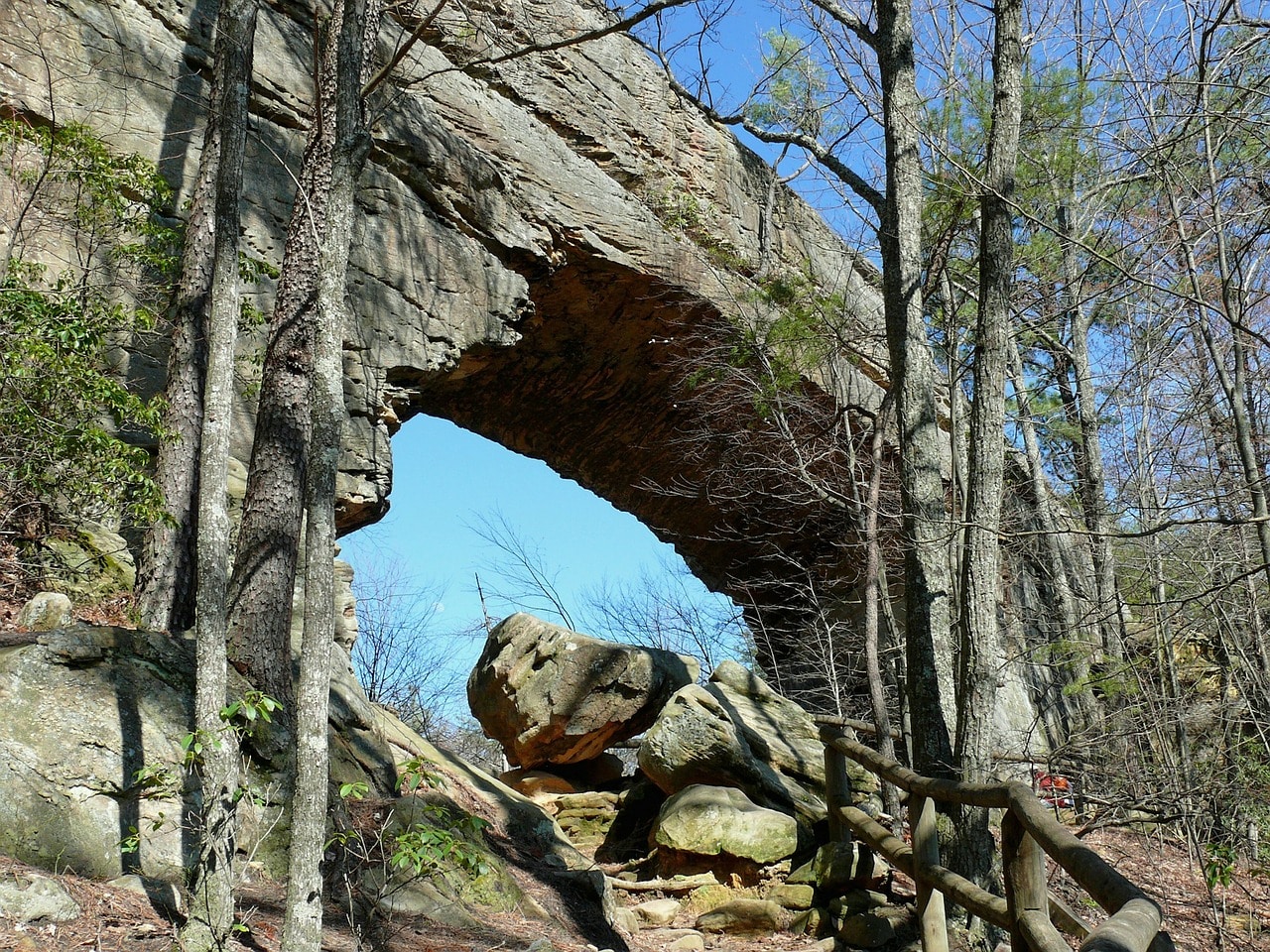
Article Summary: Kentucky National Parks
The Bluegrass State has a special place in the hearts of those of us at More Than Just Parks.
We’ve spent weeks filming Kentucky’s public lands and even created an award-winning film on the Red River Gorge.
Some of the national park sites in Kentucky are among the most beautiful on the entire east coast.
Amazing rivers, incredible monuments, jaw-dropping caves, iconic battlefields, and more make up these beautiful Kentucky national parks.
Kentucky is also known for its culture, which includes horse racing, bourbon, moonshine, coal, My Old Kentucky Home State Park, automobile manufacturing, tobacco, bluegrass music, college basketball, Louisville Slugger baseball bats, Kentucky Fried Chicken, and the Kentucky colonel.
And, if that’s not enough, Kentucky is where our nation’s sixteenth and arguably America’s greatest president was born.
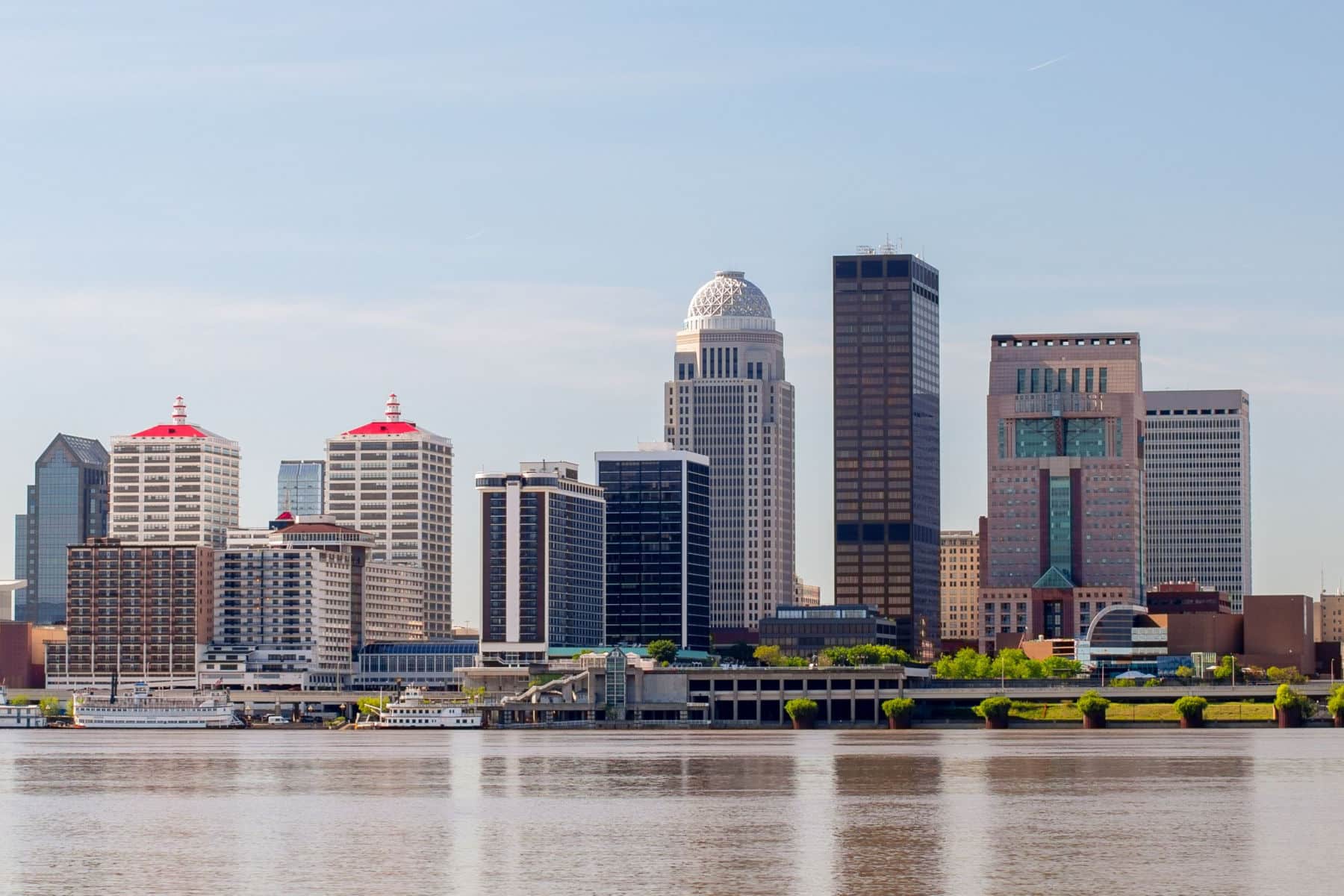
So, What Is A National Park?
We get asked that question a lot because there’s a difference between a “national park” and a “national park site.” To help you understand that difference you might want to check out our article titled: What Is A National Park Really?
If you’re planning a trip to the Bluegrass State then one book I highly recommend is: My Old Kentucky Road Trip:: Historic Destinations & Natural Wonders (History & Guide) by Cameron Ludwick.
Ready to dive in? Let’s go!

Table Of Contents: Kentucky National Parks
Kentucky National Parks
1. Mammoth Cave National Park
The first of the Kentucky National Parks on our list is also the most popular and the most well-known around the country.
If you like to explore caves then you’ll love Mammoth Cave National Park. This national park stretches almost 53,000 acres in the rolling hills of south central Kentucky.
It includes river valleys, forests, historic churches and cemeteries, sinkholes and the world’s longest cave system. There is an incredible variety of activities for visitors throughout the park year-round. Cave tours are available.
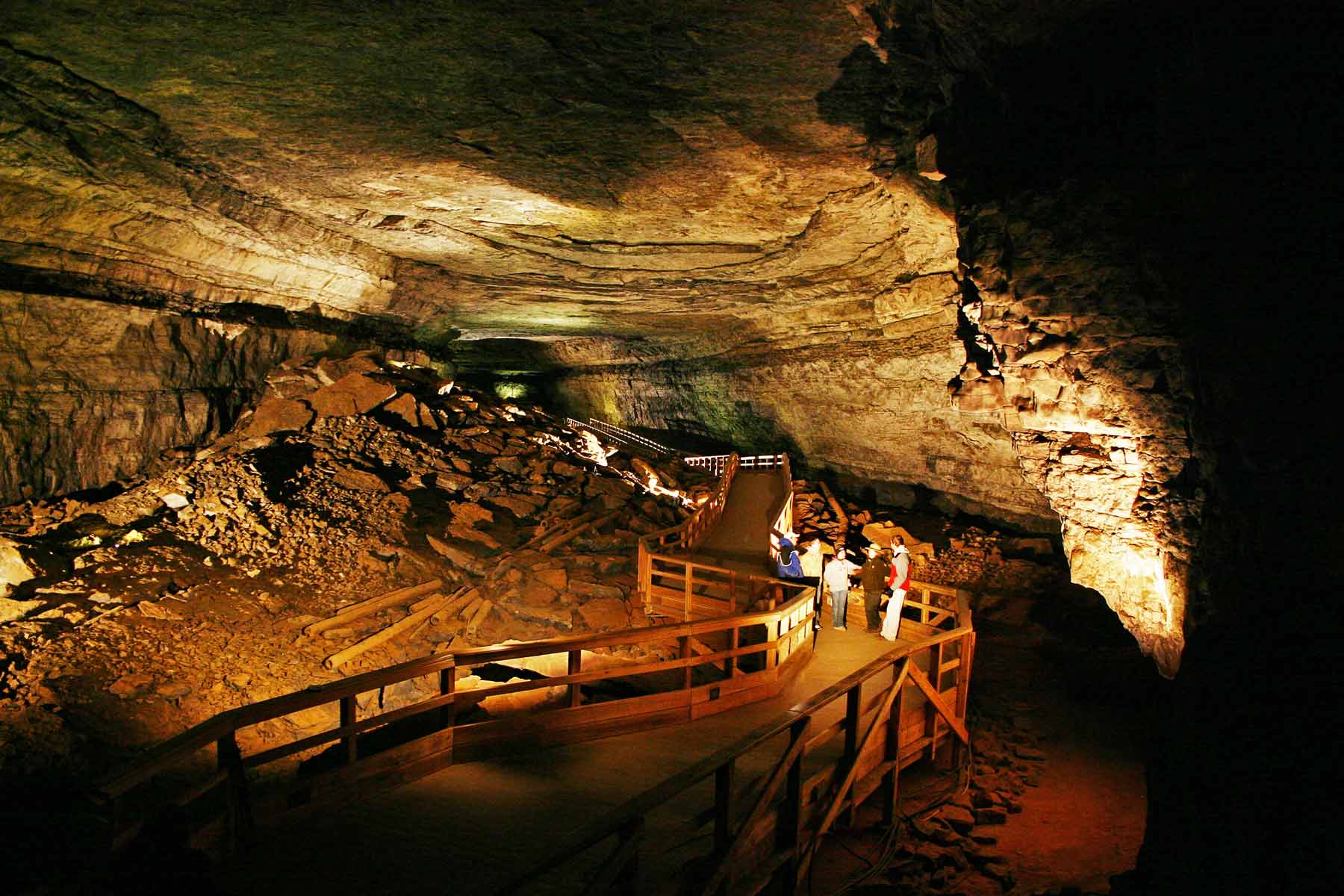
There’s Hiking & Biking
If you enjoy hiking or biking then you’re in luck when visiting this Kentucky national park. A portion of the path of the former Mammoth Cave Railroad has been converted into a 9-mile hike and bike trail.
This trail can be accessed from Park City, Kentucky, at several points along Mammoth Cave Parkway, and also at the park’s visitor center area. Along the trail, you can stop at historic sites, interpretive waysides, and scenic overlooks.
The Big Hollow Trail Loop Trails and Connector Trail offer over 10 miles of single track mountain bike trail that winds through dense woodlands and rocky outcroppings. The trail can be accessed from the trailhead within Maple Springs Campground.
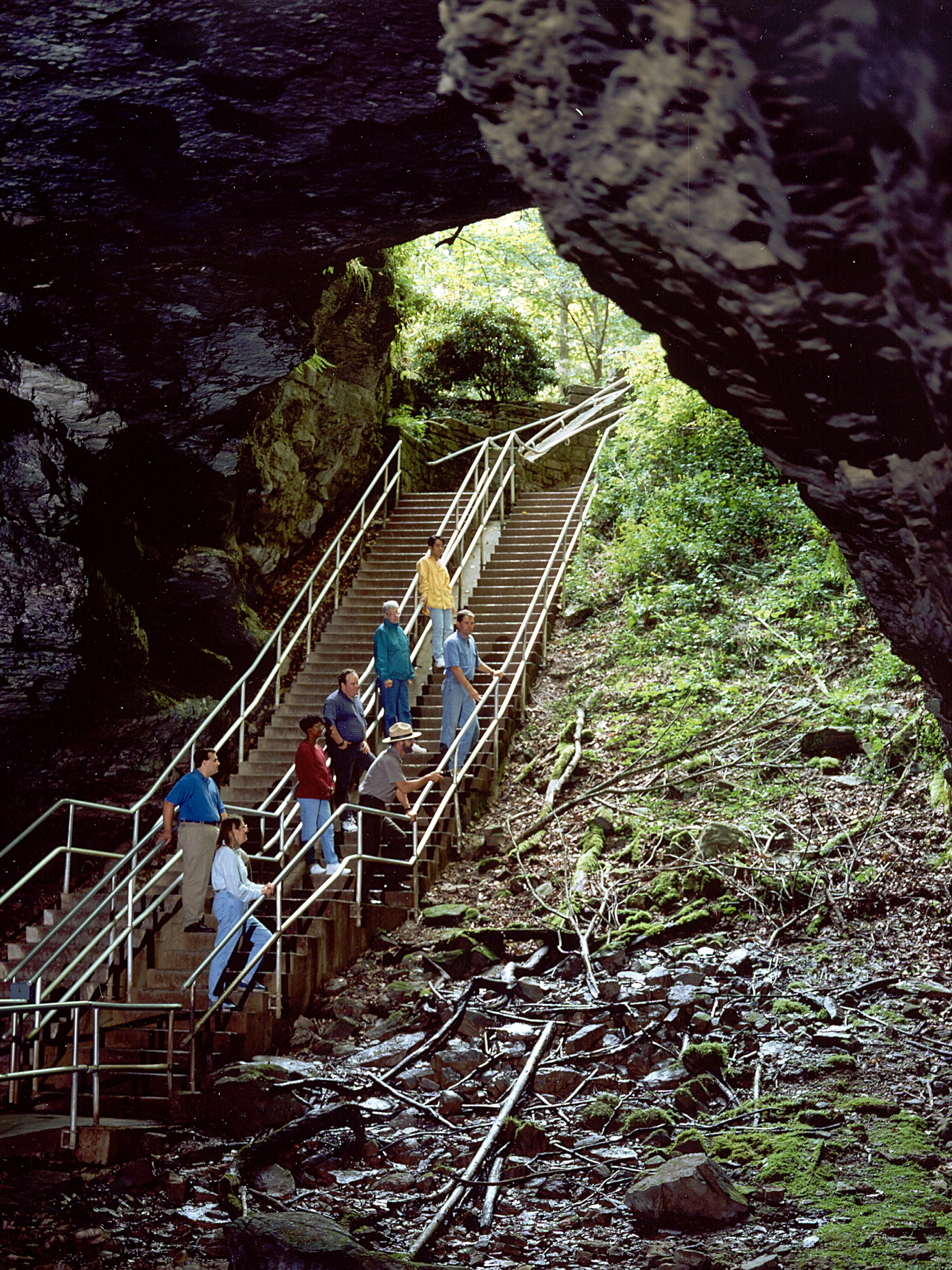
RELATED: The Black Hills Are The Most Magical Natural Wonder In America
There’s Boating, Canoeing and Kayaking Too
The National Park Service offers three different river access points on the south side of the Green River, all of which are accessible by car.
Dennison Ferry has a wooden canoe and kayak ramp with stairs to the water, Green River Ferry has a gravel canoe and kayak launch ramp and an auto ferry ramp that can also be used for motorboats, and Houchin Ferry has a temporary canoe and kayak launch ramp.
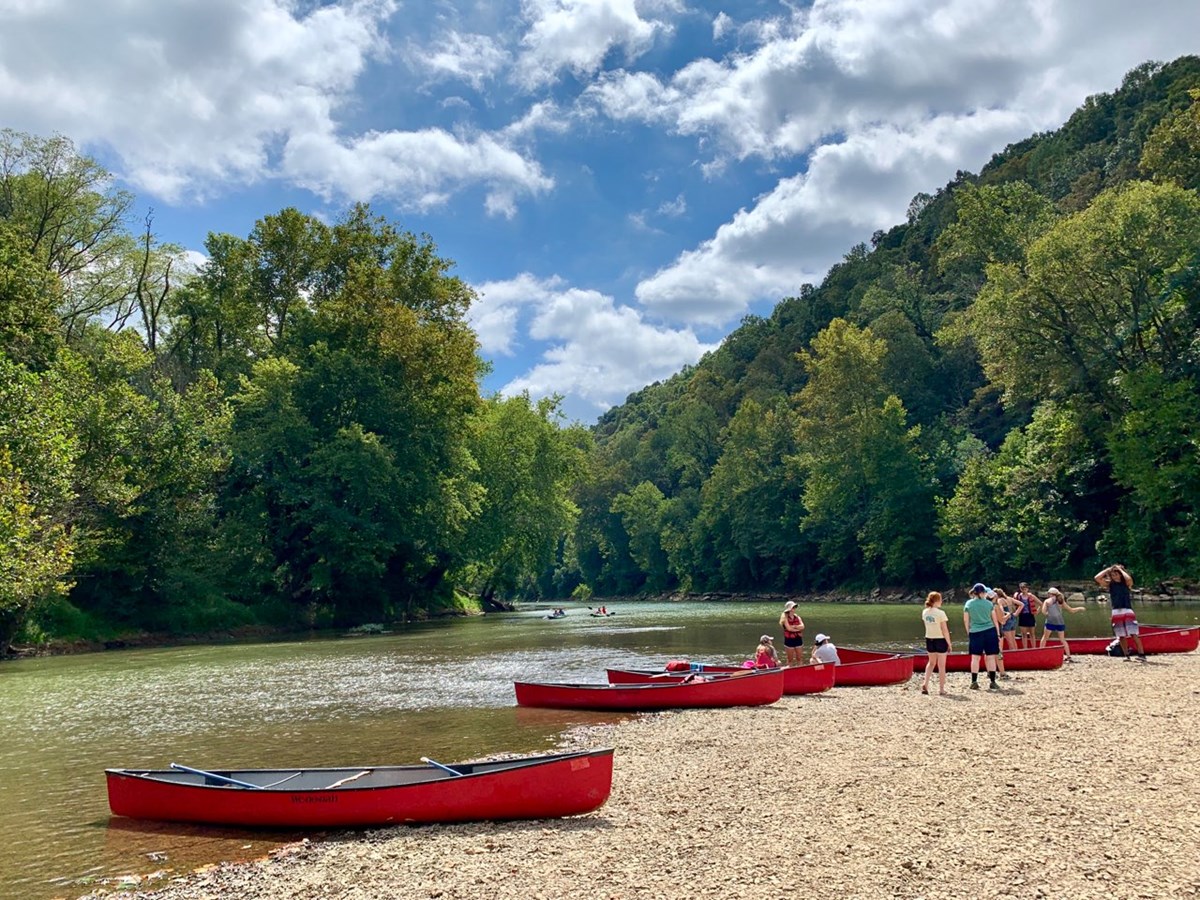
RELATED: 9+ Mississippi National Parks For Your Dixie Bucket List (Expert Guide)
The Incredible Story Of Jerry Bransford

Jerry Bransford grew up just a few miles from Mammoth Cave National Park. As a kid, he knew a little of his family connection to the park, but as an adult he learned how much his family actually contributed to the history of the caves.
Bransford went to technical college. He was drafted into the Army in 1968 during the height of the Vietnam War. While training at Fort Knox, he met Barbara who lived in Glendale. They married in 1968. He served his two years and then resided in Glendale.
In 1972, he began a 30-year career at Dow Corning in Elizabethtown. After retiring, a new adventure began.
An Incredible Story To Tell

Jerry Bransford started working in 2004 as an interpretive ranger, a fifth generation guide at Mammoth Cave National Park. That’s when he began to share his family’s incredible story with the visitors.
Bransford’s father was born near Mammoth Cave in 1914, his grandfather in 1876 and, in 1849, his great-grandfather was born there into slavery.
His great-great-grandfather, Materson Bransford, was owned by an Englishman named Thomas Bransford who came to Virginia in 1791. Branford then moved to Nashville and was a member of the 1861 state senate. It turns out that he was not only Materson’s owner, but his father as well.
A man named Franklin Gorin had an idea to make the cave a tourist attraction, Bransford said. Gorin rented two slaves from Bransford, Materson, and another named Nicholas, to explore the caves and give tours.
Since that time, Bransford’s family had guided tours for 100 years before it was named America’s 26th national park in 1941. (Source: The News Enterprise)
“I’ve Been Chosen To Tell Their Stories”

The National Park Service officially assumed operations of Mammoth Cave in 1941. When the guide staff was assembled none of the black guides were asked to stay on as cave guides, including the 4th generation Bransfords: Clifton, Arthur, Eddie, Elzie, and George.
This ended a century of both black and white cave guides working alongside each other and the legacy of Bransfords guiding at Mammoth Cave. (Source: NPS)
“It’s not about Jerry Bransford,” he said. “I believe I’ve been chosen as a representative to tell their stories, things that went untold for more than 170 years.” (Source: The News Enterprise)
Through Jerry Bransford, the incredible story of the Bransford Family and their connection to Mammoth lives on.
To Learn More About Our National Park Rangers & Their Amazing Stories, Check Out: America’s National Park Rangers
More Kentucky National Parks
2. Abraham Lincoln Birthplace National Historical Park
Abraham Lincoln Birthplace National Historical Park is located in Kentucky and is dedicated to preserving the site where President Abraham Lincoln was born in 1809.
The park was established in 1916, when the Lincoln Farm Association purchased the land where Lincoln was born and built a memorial building over the site of the original cabin. The memorial building, which features a log cabin replica of the one in which Lincoln was born, was dedicated in 1909.
In 1911, the Lincoln Farm Association transferred the ownership of the site to the Federal Government, and it was officially designated as a national historical park in 1916. Since then, the park has undergone several renovations and additions, including the construction of a visitor center, a museum, and several walking trails.
The park is open to visitors year-round and offers a variety of interpretive programs, guided tours, and educational activities. It is one of the most visited historical sites in the state of Kentucky, and it continues to play an important role in preserving the legacy of one of America’s greatest presidents.
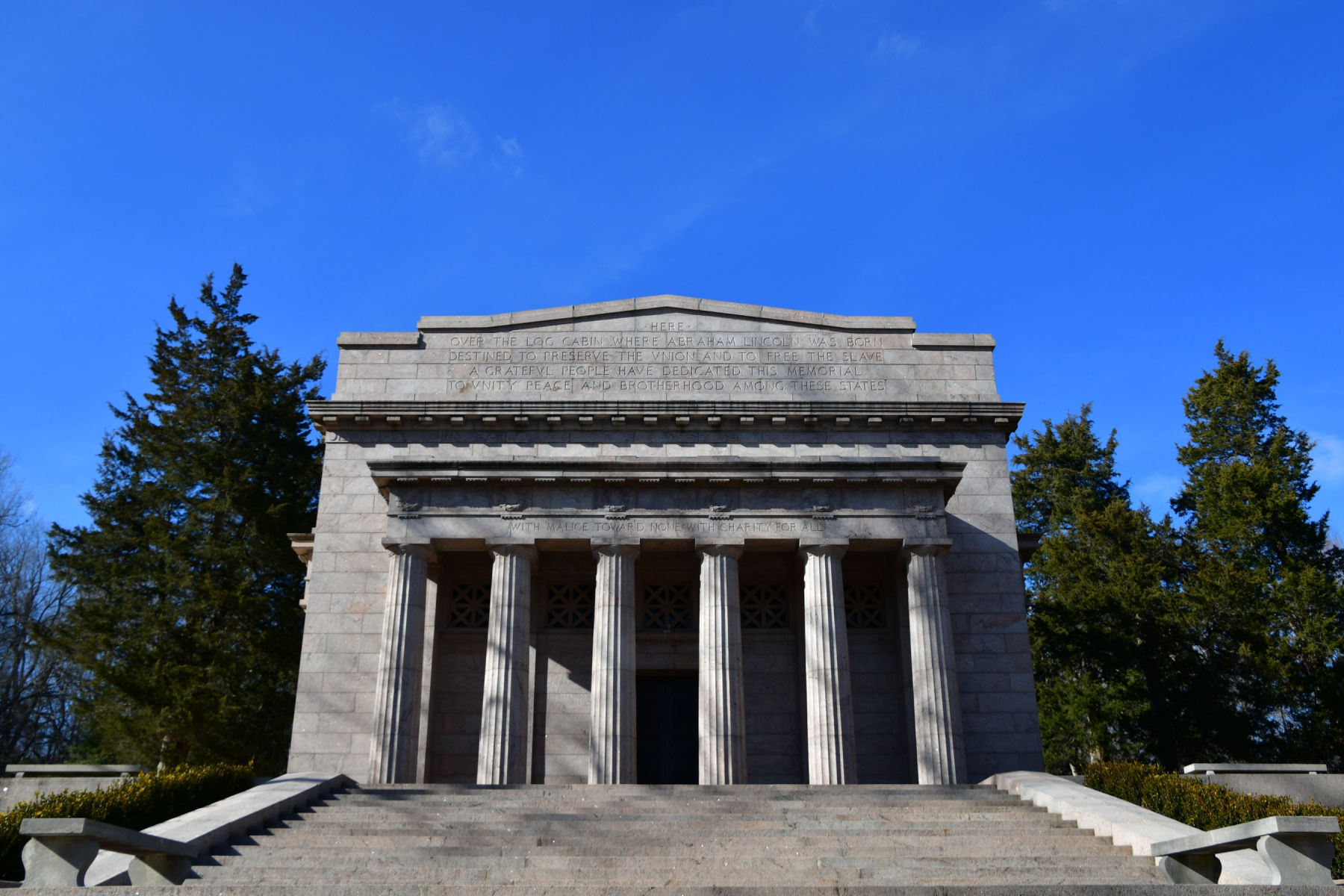
To Learn More About Lincoln
If you’re interested in learning more about the man many historians consider to have been America’s Greatest President then I have some wonderful book recommendation:
- Abraham Lincoln (The Sangamon Edition, Six Volume Set): The Prairie Years (2 Volumes) and The War Years (4 Volumes) by Carl Sandburg.
- Lincoln by David Herbert Donald.
- A. Lincoln: A Biography by Ronald C. White.
- Team of Rivals: The Political Genius of Abraham Lincoln by Doris Kearns Goodwin.
CHECK OUT: 10 BEST Civil War Sites In America
3. Big South Fork National River & Recreational Area
Of the Kentucky National Parks where history definitely takes a back seat to nature, my favorite would have to be Big South Fork National River & Recreation Area.
This national park site was established in 1974 to preserve the natural and cultural resources of the Big South Fork of the Cumberland River and its tributaries. The area encompasses over 125,000 acres of rugged, mountainous terrain, featuring deep gorges, sandstone cliffs, and forests.
The area has a rich history, with evidence of human habitation dating back over 12,000 years. Native Americans, early settlers, and Civil War soldiers all called the area home, and their stories are still preserved in the park through artifacts, historical sites, and cultural landscapes.
The park also has a strong mining heritage, from the coal mines of the early 1900s to the sandstone quarries of the 1930s.
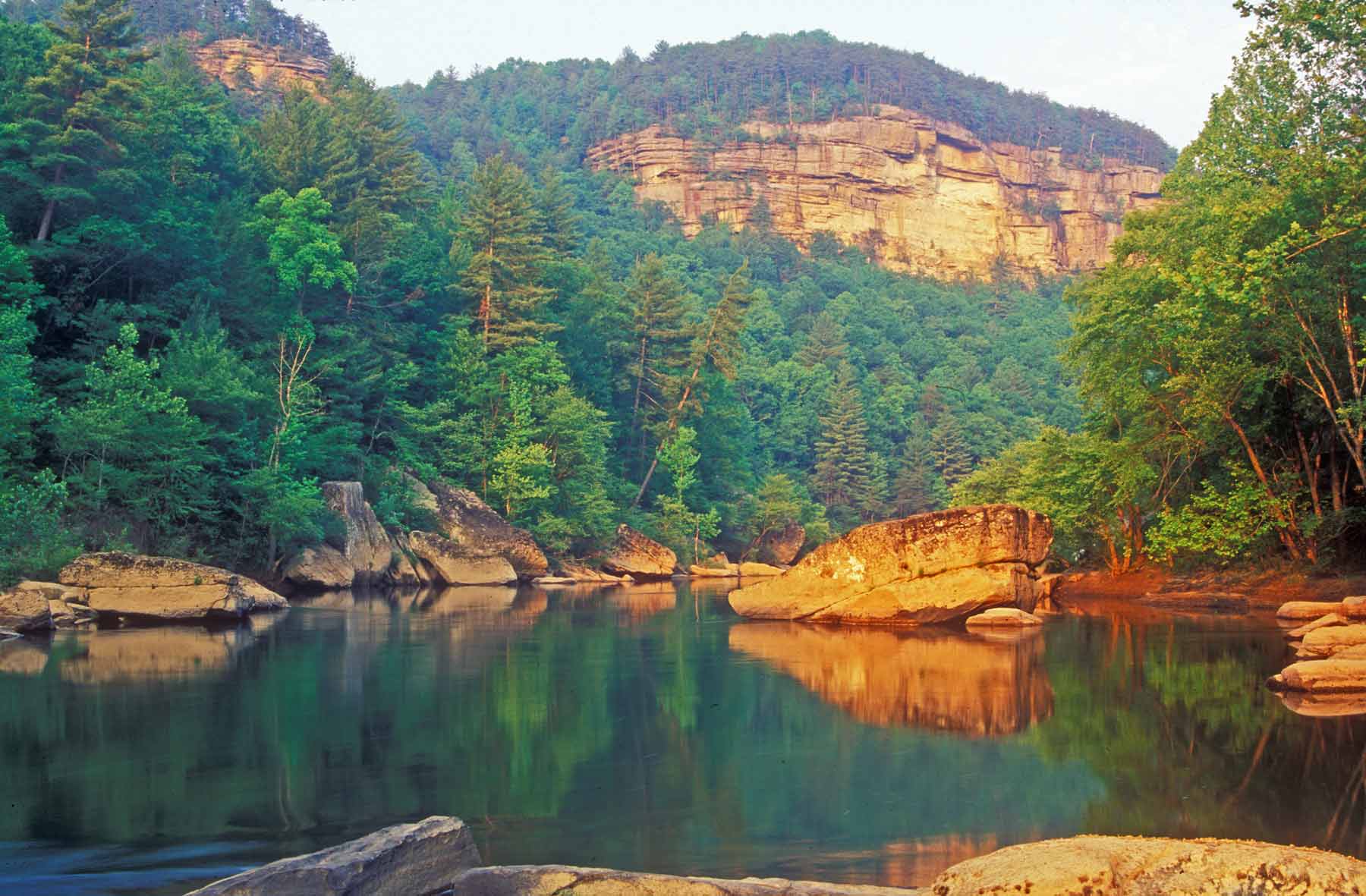
A Wide Range Of Recreational Opportunities
The park offers a wide range of recreational opportunities, including hiking, camping, horseback riding, and fishing. The park also features several visitor centers, museums, and historic structures, which tell the story of the people and the land throughout history.
Big South Fork NRRA is a popular destination among outdoor enthusiasts, preserving the natural beauty and cultural heritage of the region, while offering an array of recreational activities.
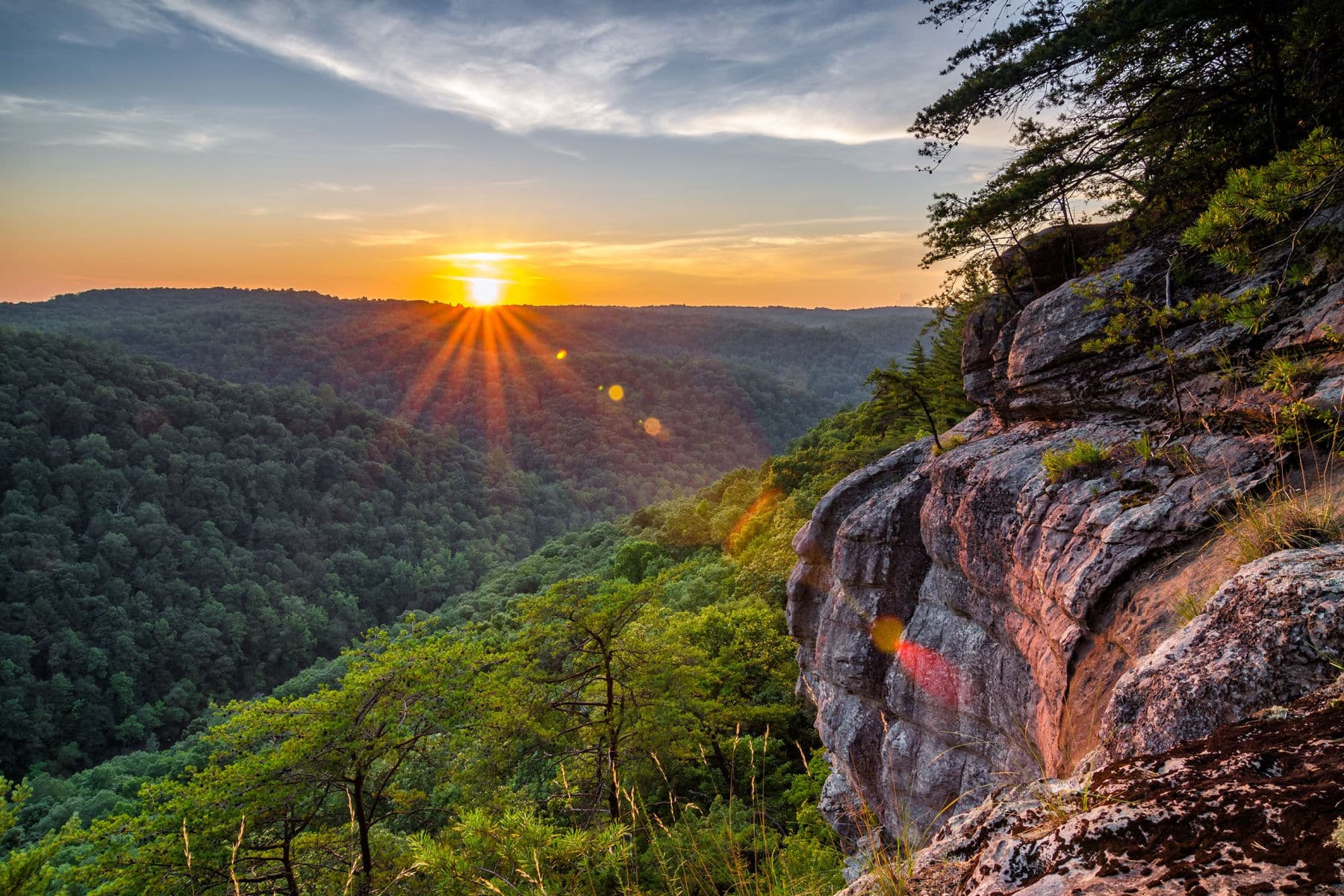
So Many Things To See And Do There
If you like to see magnificent sites then I recommend the East Rim Overlook in the southeastern area. From there you will get a spectacular view of the river merging into the Cumberland Plateau.
If hiking is what you love to do then be sure to look out for the natural sandstone arches that formed along the edges of the gorge. You can find them on the western side of the park.
If you love history then check out the Blue Heron Mining Community. It’s a coal mining town which was once owned by the Stearns Coal and Lumber Co. You can ride the Big South Fork Scenic Railway to get there. It’s an incredibly scenic trip.
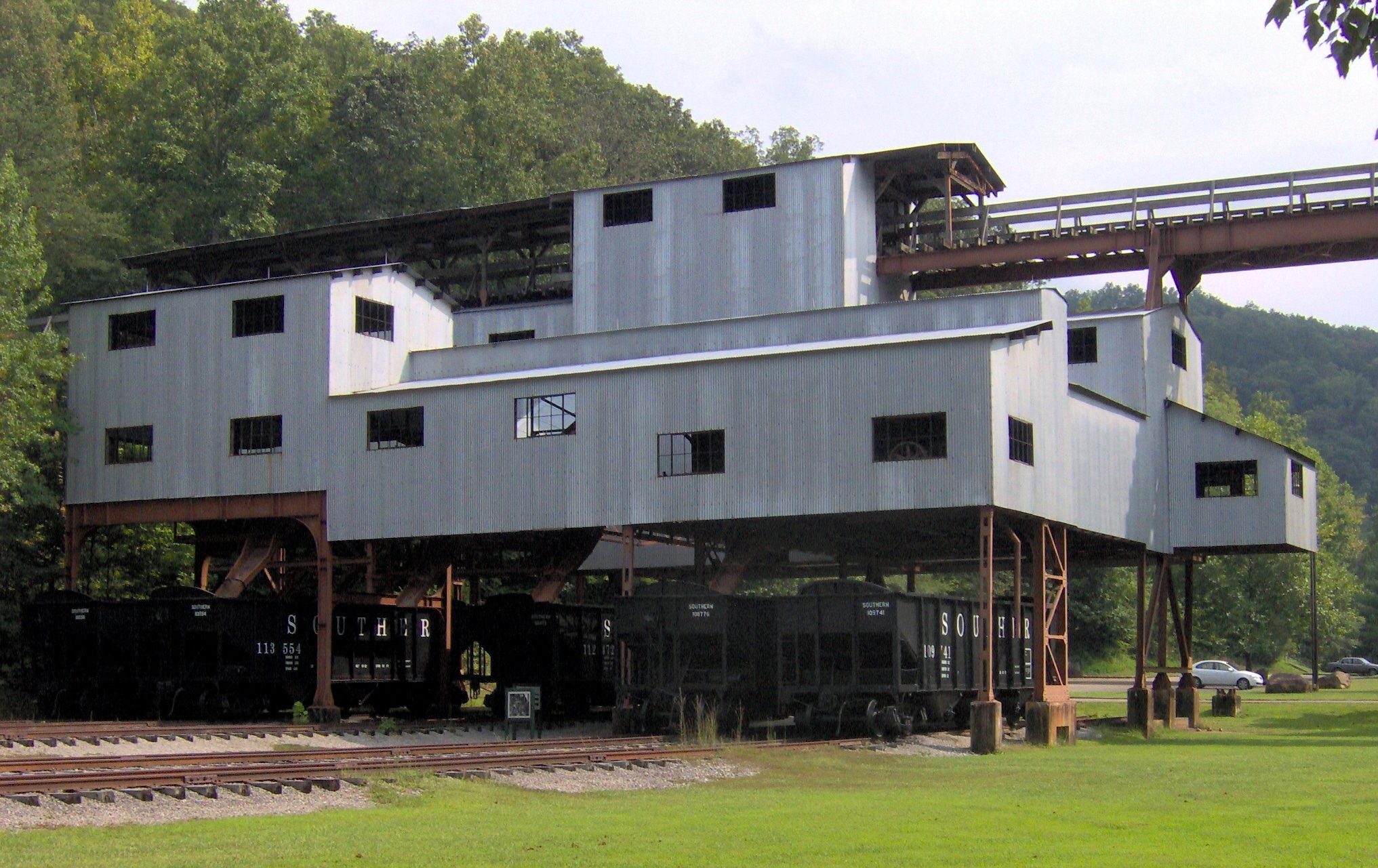
RELATED: 12 AMAZING Georgia National Parks-Everything To Know
4. Camp Nelson National Monument
Among the Kentucky National Parks it comes to the important role played by African Americans in the Civil War, none is more important than Camp Nelson National Monument.
After the Union fiasco at Fredericksburg, General Ambrose Burnside was reassigned to the newly created Department of the Ohio.
In April of 1863, Burnside asked a search committee to identify a location that would allow the Department of the Ohio to consolidate troops and supplies in central Kentucky.
This led to the creation of Camp Nelson. It was established as a supply depot and hospital during the Civil War for the U.S. Army. Camp Nelson became a large recruitment and training center for African American soldiers (USCTs).
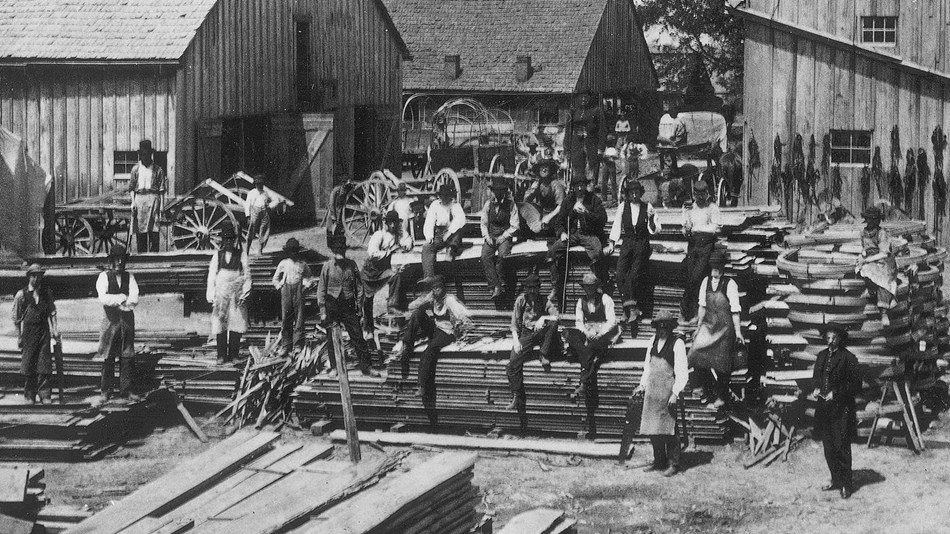
A Home For Colored Refugees
Camps, such as Camp Nelson, served as a beacon of freedom for the oppressed. They offered protection to formerly enslaved people in Confederate states under Union control.
The federal government established what it called a “Home for Colored Refugees” at Camp Nelson. It initially included a communal mess hall, a school, barracks for single women and the sick, and duplex family cottages.

CHECK OUT: 20 Best Black History Sites In America For You To Visit
Things To Do & See
There are museum exhibits and a short film. The visitor center provides an orientation to the historic events that unfolded at Camp Nelson.
Objects on display provide a window into the role Camp Nelson played during its height as a military installation, supply depot, hospital, recruitment center, and refugee camp.
While there, visitors can also see the Oliver Perry “White” House. It’s an original home built in the mid-1850s that was used as Officer Quarters while the property was part of Camp Nelson (1863-1866).
RELATED: Five Louisiana Parks Sure To Impress You On Your Next Trip South
A Reconstructed Barracks
There’s also a reconstructed barracks depicting camp life for the thousands of Federal soldiers stationed at Camp Nelson. It includes a meeting space and small library and is open to the public for guided tours on a limited basis.
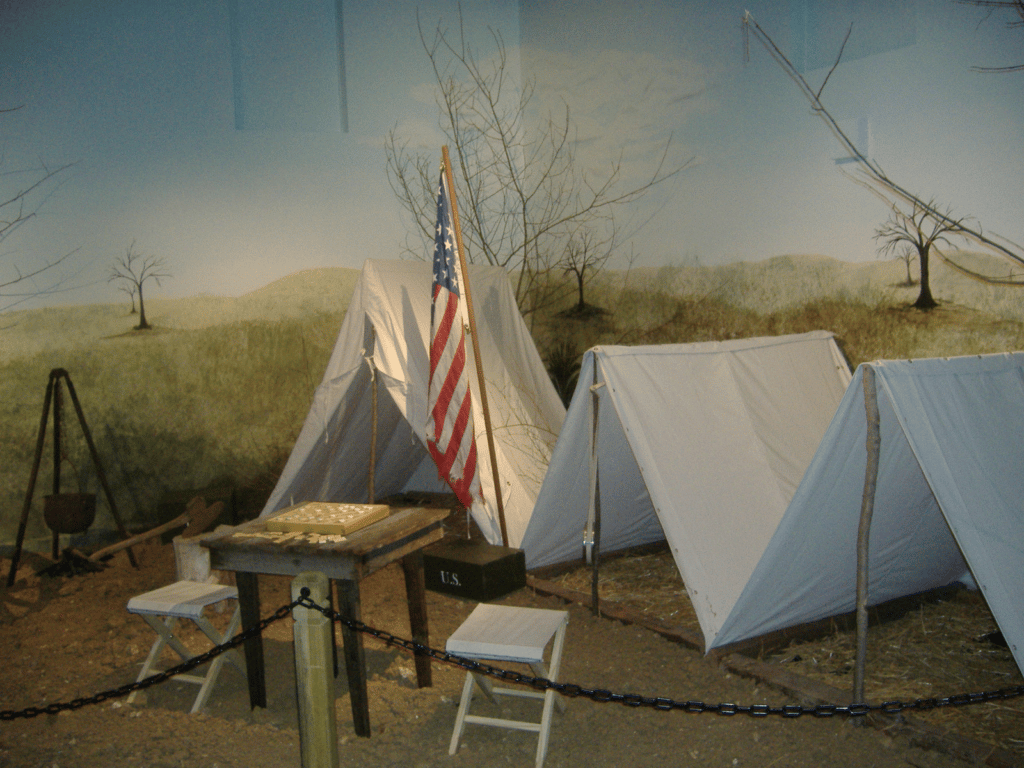
Five Miles Of Hiking Trails
When I’m visiting an historic site, my favorite activity–other than looking for books in the bookstore–is walking the grounds and soaking up all of that wonderful history. At Camp Nelson, there are five miles of hiking trails allowing visitors to experience the incredible landscape first-hand.
On the hiking trails, there are numerous interpretive markers providing an opportunity to explore earthworks and fortifications which protected Camp Nelson. You, too, can walk in the footsteps of Civil War soldiers to gain a better appreciation of what happened.
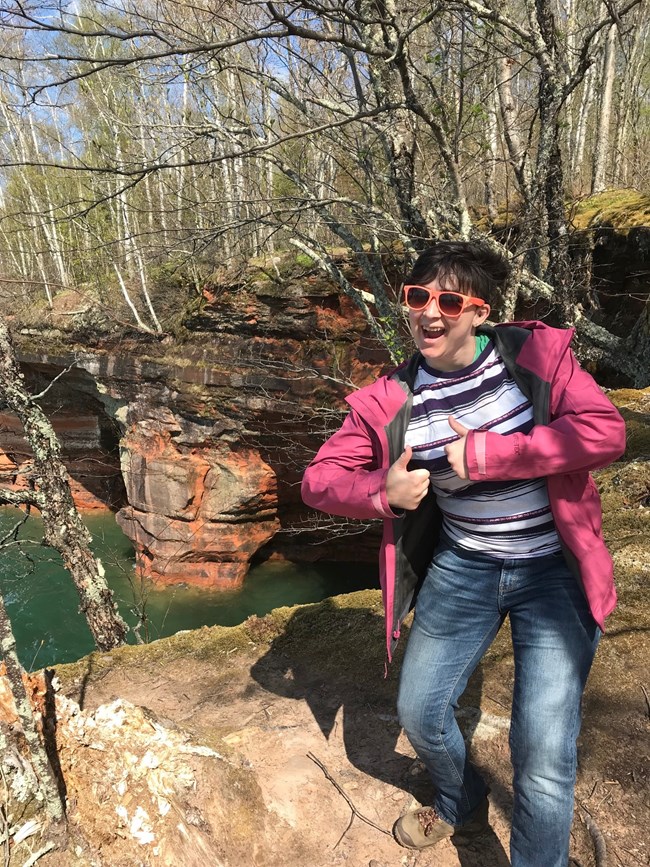
Hall Community & The Camp Nelson National Cemetery
While you’re there, you should also visit the Hall Community. It symbolizes the efforts to assist African American refugees as they struggled to begin a new life. There is a small church there which was built in 1912.
The church was named in honor of John Fee who dedicated his life to creating educational opportunities for African Americans.
There’s also the Camp Nelson National Cemetery. It includes gravesites for 1,615 Federal dead and is located adjacent to the national monument. It’s open daily from dawn to dusk.
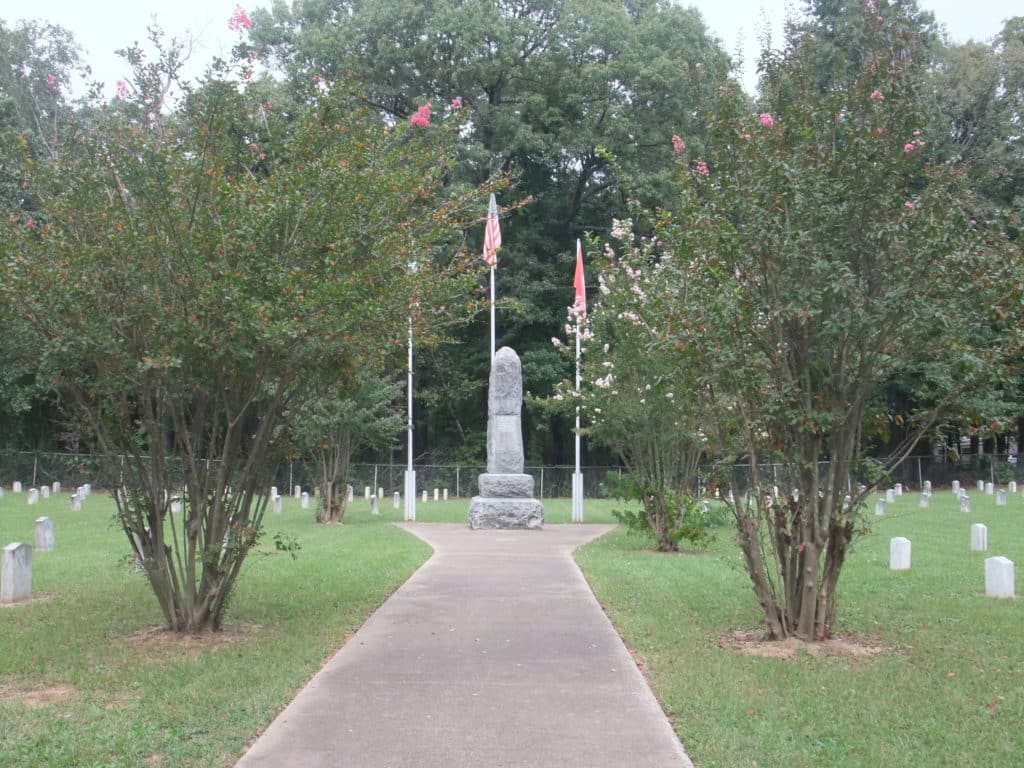
RELATED: 7 AMAZING Kansas National Parks-Everything You Need To Know
More Kentucky National Parks
5. Fort Donelson National Battlefield
The Kentucky National Parks also include some monumental battlefields.
Fort Donelson National Battlefield is a protected area located in Tennessee that preserves the site of the Battle of Fort Donelson, which was fought during the American Civil War in February 1862.
The battle was a significant Union victory, as it marked the first major Union victory in the Western Theater of the war and led to the capture of the Confederate stronghold of Nashville, Tennessee.
The fort was constructed by Confederate forces in 1861 to defend the Cumberland River, a crucial transportation route in the region.
In February 1862, Union forces under the command of Generals Ulysses S. Grant and John A. McClernand launched an attack on the fort, which was defended by Confederate General Simon B. Buckner. After a two-day siege, the Confederates were forced to surrender, and the Union army captured more than 12,000 Confederate soldiers.
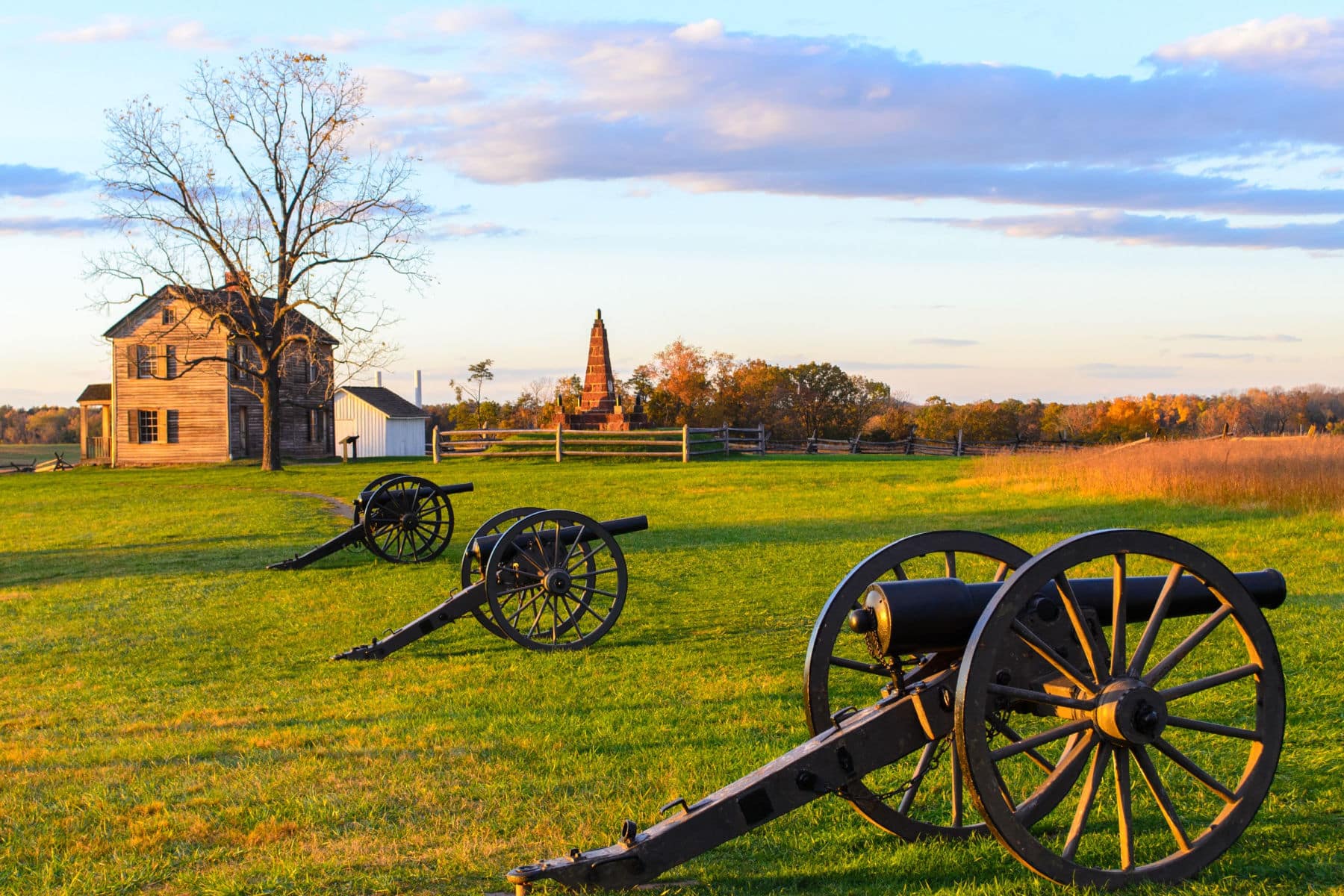
The Park Features Visitor Centers, Museums & Historic Structures
The Fort Donelson National Battlefield was established in 1928 to commemorate the battle and to preserve the site and its associated history.
The park features several visitor centers, museums, and historic structures, including the restored Fort Donelson Confederate Earthworks and the National Cemetery. It also offers interpretive programs, guided tours, and educational activities that help visitors understand the significance of the battle and its impact on the Civil War.
The park is a popular destination for Civil War history enthusiasts, and it is an important part of the national park system, preserving the history of the Civil War and the role that Fort Donelson played in it.
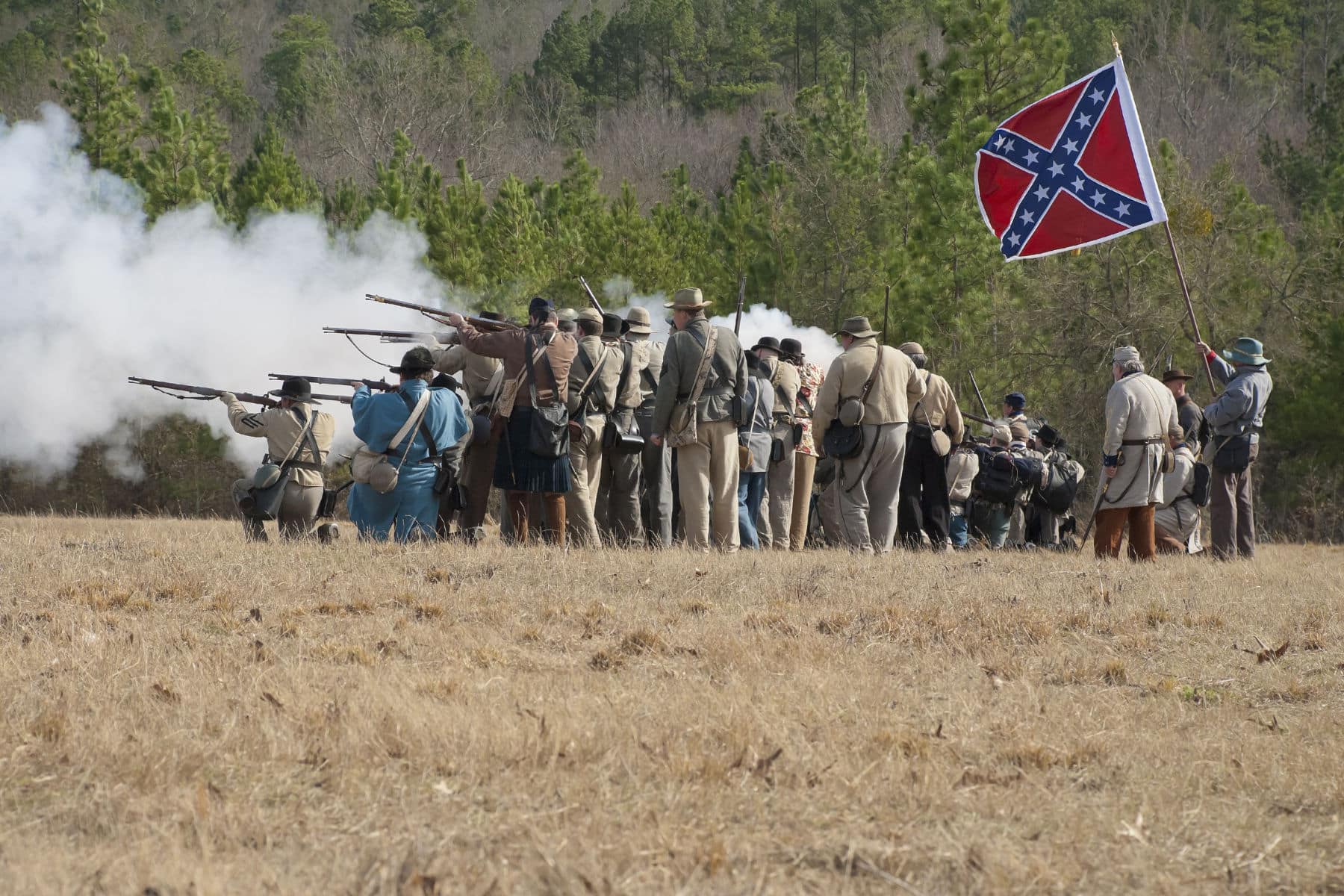
Things To See & Do At Fort Donelson
Located along the beautiful banks of the Cumberland River, the Fort Donelson National Battlefield is a wonderful place to visit.
You can drive the actual battlefield grounds. First, however, I would recommend a trip to the visitor center. There’s a great park film that helps you understand the battle and why Fort Donelson was so important for the Union forces.
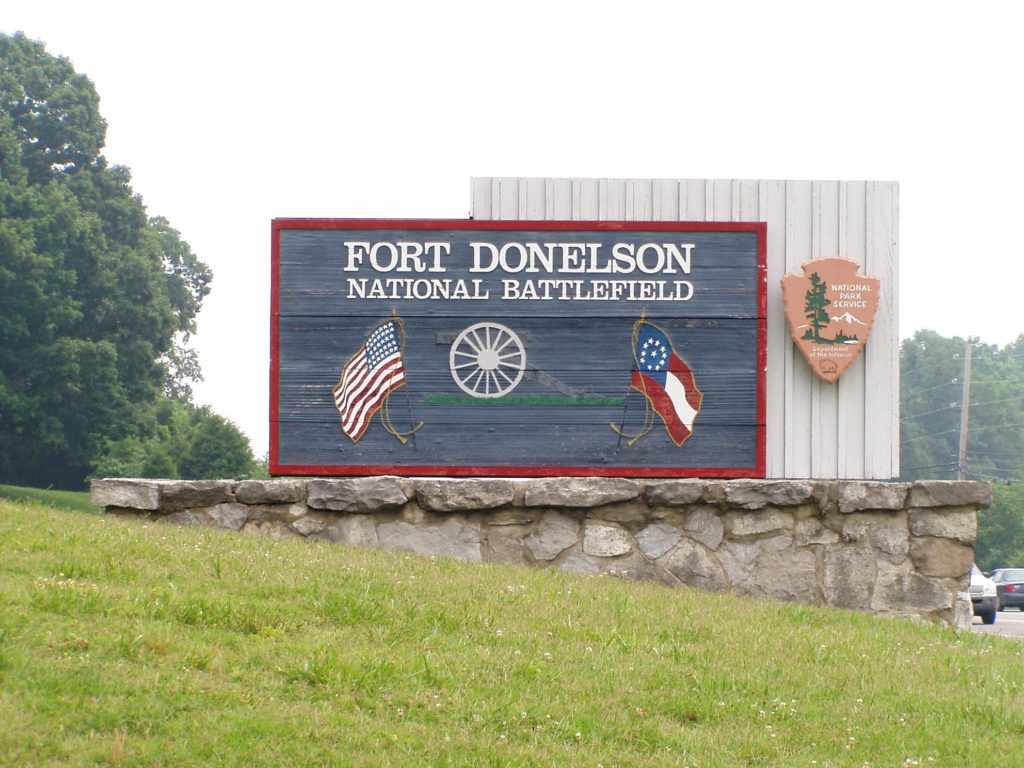
CHECK OUT: 10 BEST Civil War Sites In America
A 6-Mile Trail With 11 Stops
The park has a 6-mile trail with 11 stops. It’s a self-guided driving tour that takes you through battlefield sites, the spot where Union soldiers camped for the night before the surrender, and into the small town of Dover.
There you can see the historic Dover Hotel. It’s the site where Ulysses S. Grant accepted the Confederate surrender of the Fort from his old friend Simon B. Buckner.
While you’re there, you may also want to visit the Fort Donelson National Cemetery. The names of the soldiers interred in the Fort Donelson National Cemetery have been compiled from original cemetery records.
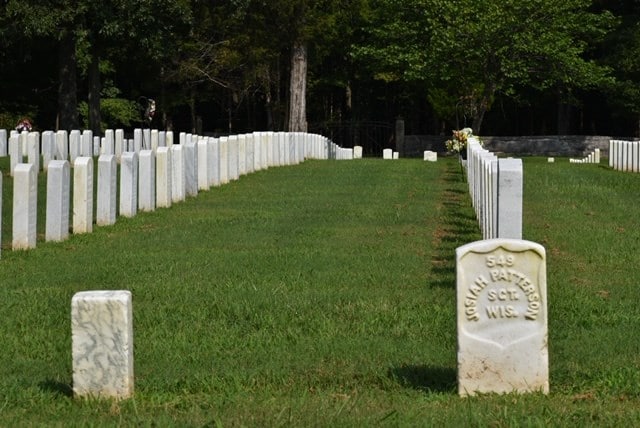
RELATED: 6 Missouri National Parks Worth A Stop On Your Next Midwest Road Trip
Still More Kentucky National Parks
6. Mill Springs Battlefield National Monument
One of my favorite Kentucky National Parks commemorates a lesser-known Civil War battle.
The Battle of Mill Springs was a Union victory early in the Civil War.
The battle took place on January 19, 1862. Confederate General Felix K. Zollicoffer was killed when he mistakenly approached a Union officer thinking it was one of his own men.
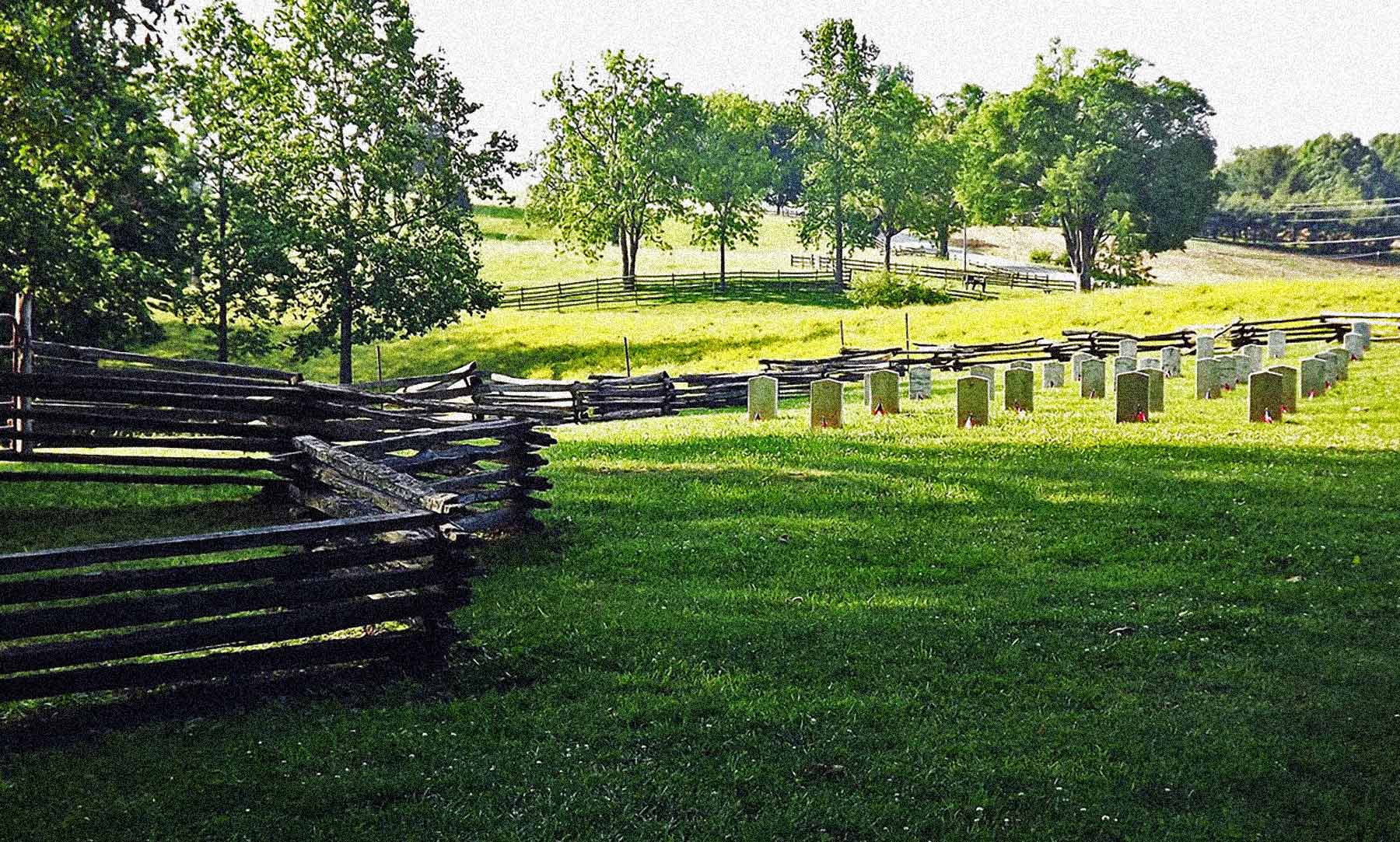
The death of the their commander coupled with intense Union volleys of gunfire quickly demoralized the Confederate forces. They subsequently retreated into Tennessee.
The Union victory led to the total collapse of the eastern sector of the Confederate defensive line established to defend the Upper South. This, in turn, helped to solidify the Union’s control of what was a pivotal border state in the conflict.
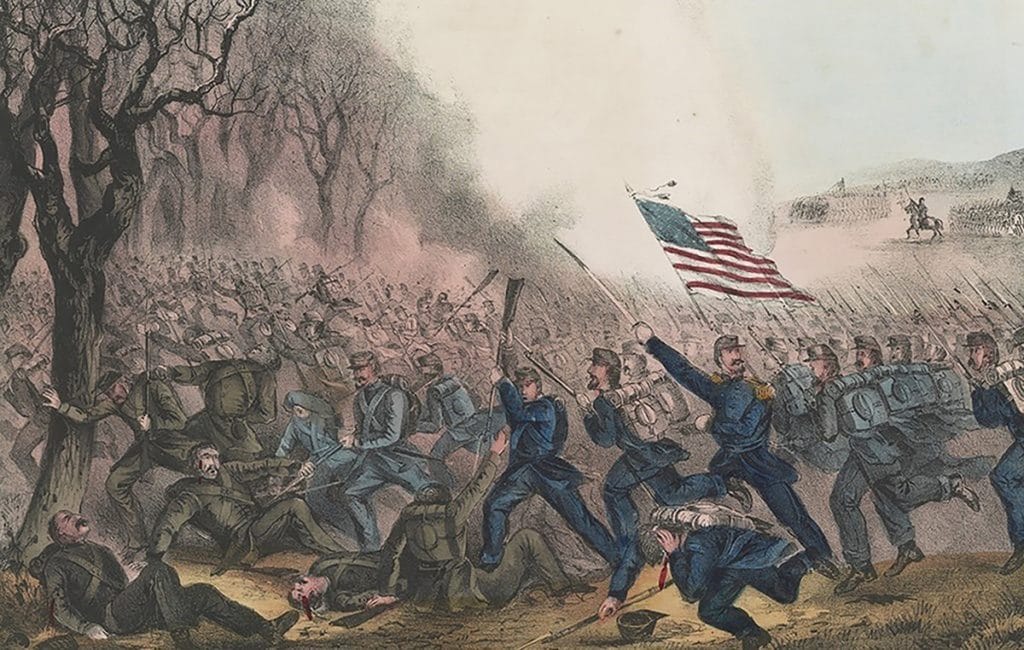
“I hope to have god on my side, but I must have Kentucky.”
-President Abraham Lincoln
Things To Do At Mill Spring
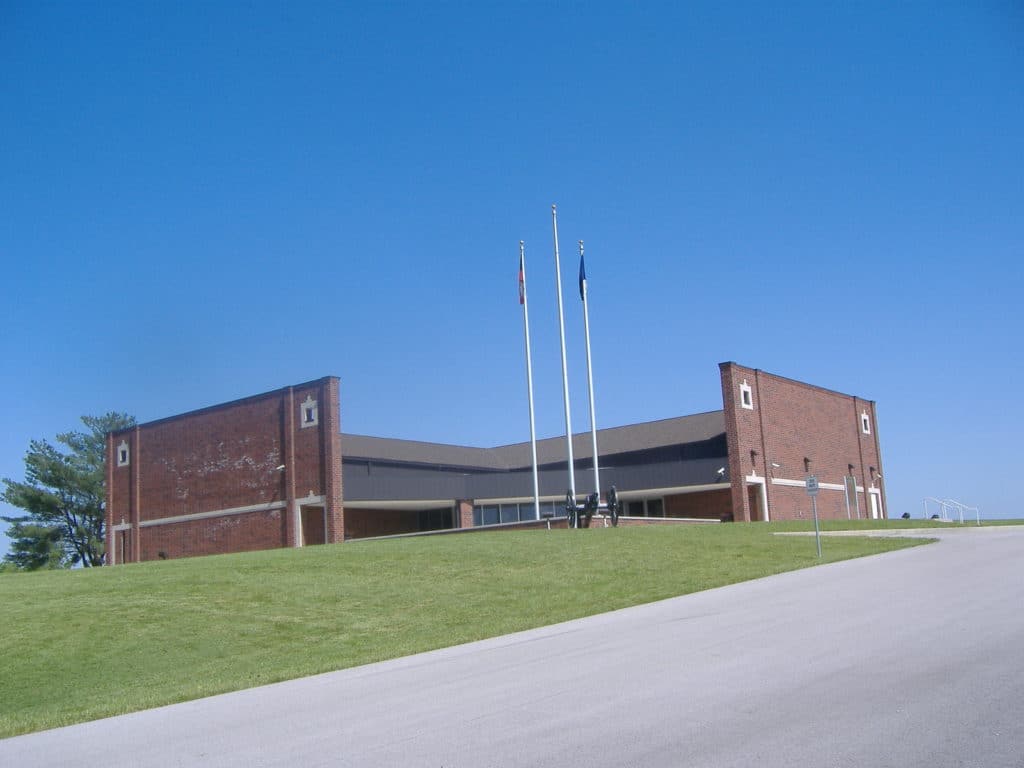
There’s a wonderful Mill Springs Visitor Center which features a 20-minute film about the Battle of Mill Springs. Visitors will find a museum with many fascinating exhibits which provide a greater understanding of the battle’s combatants and its impact on the war.
Regarding the battlefield itself, much of the battlefield can be seen from public roadways. The Mill Springs Battlefield Association developed a 10-stop Driving Tour, which begins at the Visitor Center.
All stops along the tour are marked with large signs. There are also informative signs to help you understand a site’s significance. Parking is limited at certain stops.
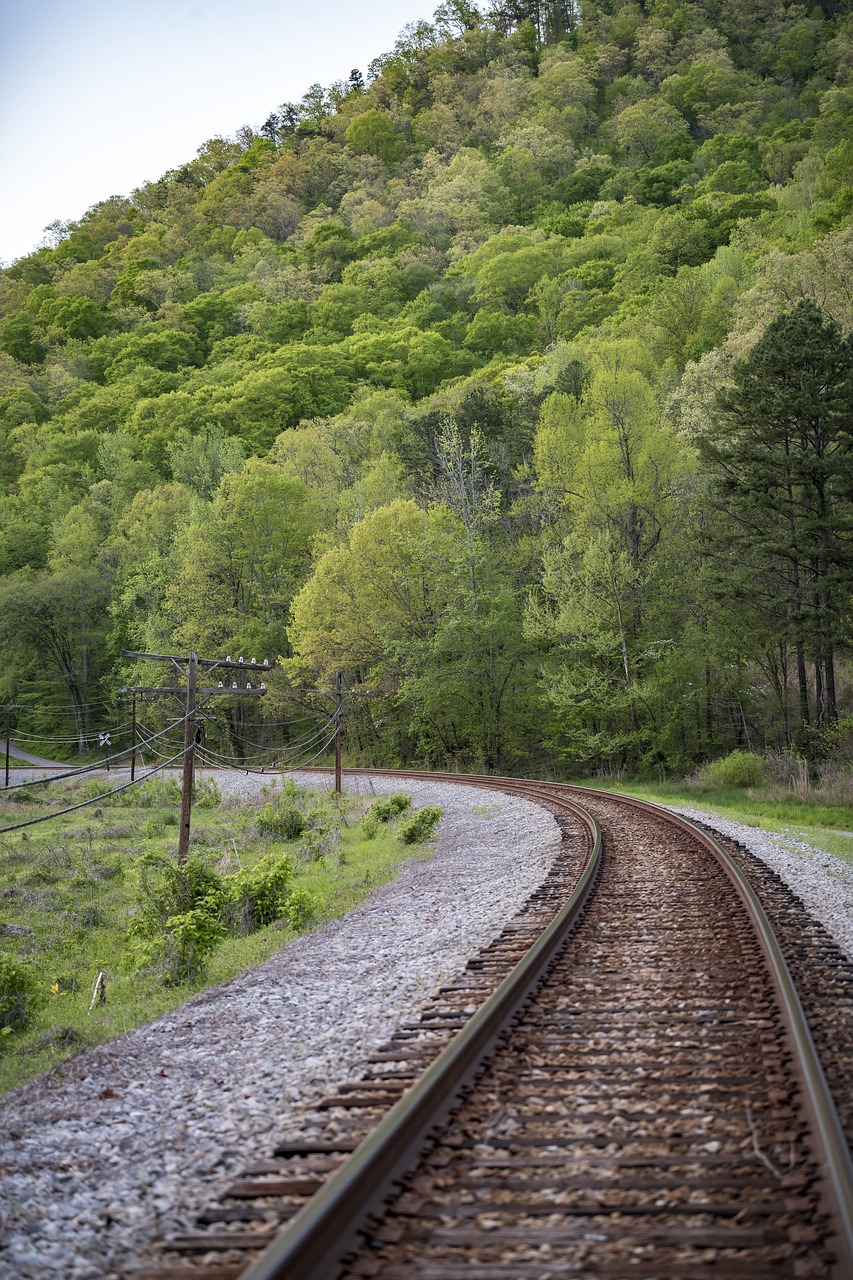
Zollicoffer Park
If you’re looking to stretch your legs then I recommend Zollicoffer Park. The park is named for the Confederate general who died there.
There’s a half mile Ravine Trail which takes hikers down into a ravine, crossing the battle-lines of the two sides. Signs along the way explain key battle events.

Brown-Lanier House
You may also want to tour the Brown-Lanier House. It’s an antebellum home built before the Civil War. The home housed the families that operated the nearby grist mill.
During the battle, the historic farmhouse became headquarters for generals on both sides of the fighting, before and after the Battle of Mill Springs.
You can also see the nearby grist mill which is currently operated by the U.S. Army Corps of Engineers. It is located on the shores of Lake Cumberland and fed by springs, The mill has been completely restored with a working water wheel.
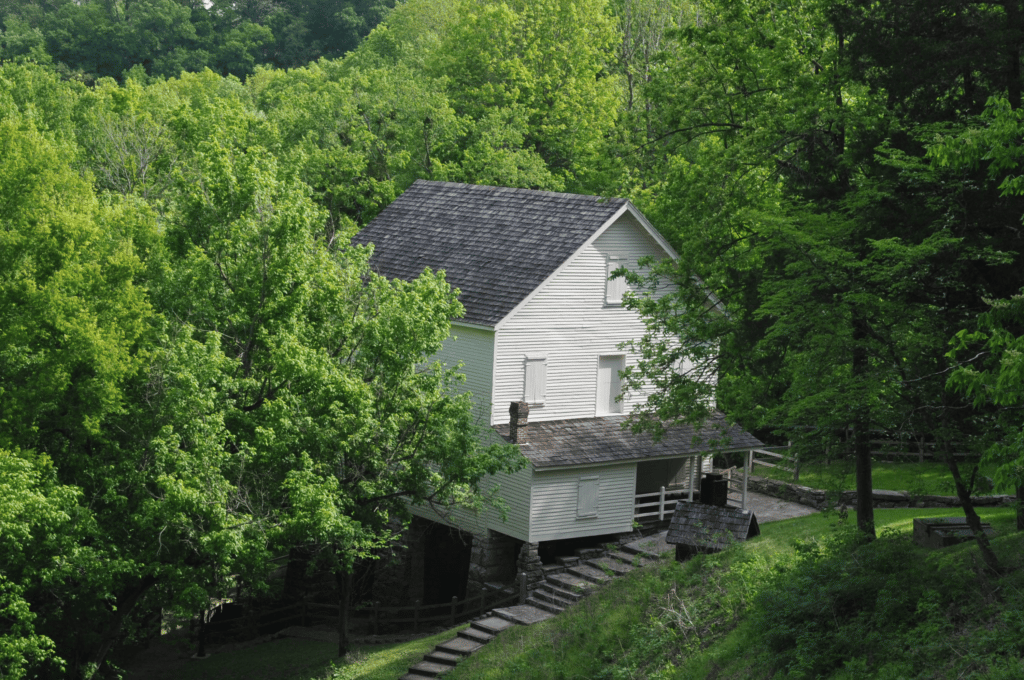
RELATED: 6 (AMAZING) Oklahoma National Parks-Everything To Know
Check Out Our Great Smoky Mountains Film
MTJP | Smoky Mountains is a visually stunning journey through Great Smoky Mountain National Park during peak fall color.
This video is the culmination of two weeks exploring Great Smoky Mountains National Park. We chose Great Smoky Mountains as our second park because of it’s extraordinary display of fall colors, it’s incredibly diverse wildlife population, and it’s importance as the most visited national park in the country.
This film was shot entirely in 4K UHD. We chose to capture this park in the Fall as it is home to one of the most wonderful displays of fall foliage on the planet. Fall is also a wonderful time to watch the elk rutting season and experience cooler, less humid temperatures.
Situated in Tennessee & North Carolina Great Smoky Mountain is one a handful of southern National Parks.
Kentucky National Parks FAQ
Mammoth Cave National Park is Kentucky’s most visited park and features an astounding 420 miles (680 km) of caves.
8 Of The Most Beautiful Spots To Visit In Kentucky
8 – Daniel Boone National Forest.
7 – Cumberland Gap National Historical Park.
6 – Cumberland Falls.
5 – Mammoth Cave.
4 – Breaks Interstate Park.
3 – Kentucky State Capitol.
2 – Louisville’s Olmsted Parks.
1 – Red River Gorge.
The following is a list of the must-see historic sites in Kentucky:
Abraham Lincoln Birthplace National Historical Park
Fort Donelson National Battlefield
Camp Nelson National Monument
Mill Springs Battlefield National Monument
Belle Of Louisville
Dr. Ephraim McDowell House in Danville
Ashland, Henry Clay’s Home
Old State House in Frankfort
Jefferson Davis Monument
Churchill Downs
Why Trust Us About Kentucky National Parks?
We’re Jim Pattiz and Will Pattiz, collectively known as the Pattiz Brothers (and sometimes the Parks Brothers) and we absolutely LOVE the national parks.
You should probably know that we don’t just make this stuff up out of thin air. We’ve spent our entire adult lives exploring and filming America’s national parks and public lands.
We’ve worked with the National Park Service, the Department of Interior, USDA, and the U.S. Forest Service for years creating films on important places and issues. Our work has been featured in leading publications all over the world and even some people outside of our immediate family call us experts on the national parks.
Meet The Parks Brothers
Map of the Kentucky National Parks
List Of All 6 National Park Sites In Kentucky
- Abraham Lincoln Birthplace National Historical Park
- Big South Fork National River & Recreation Area
- Camp Nelson National Monument
- Fort Donelson National Battlefield
- Mammoth Cave National Park
- Mill Springs Battlefield National Monument
We Hope You’ll Follow Our Journey
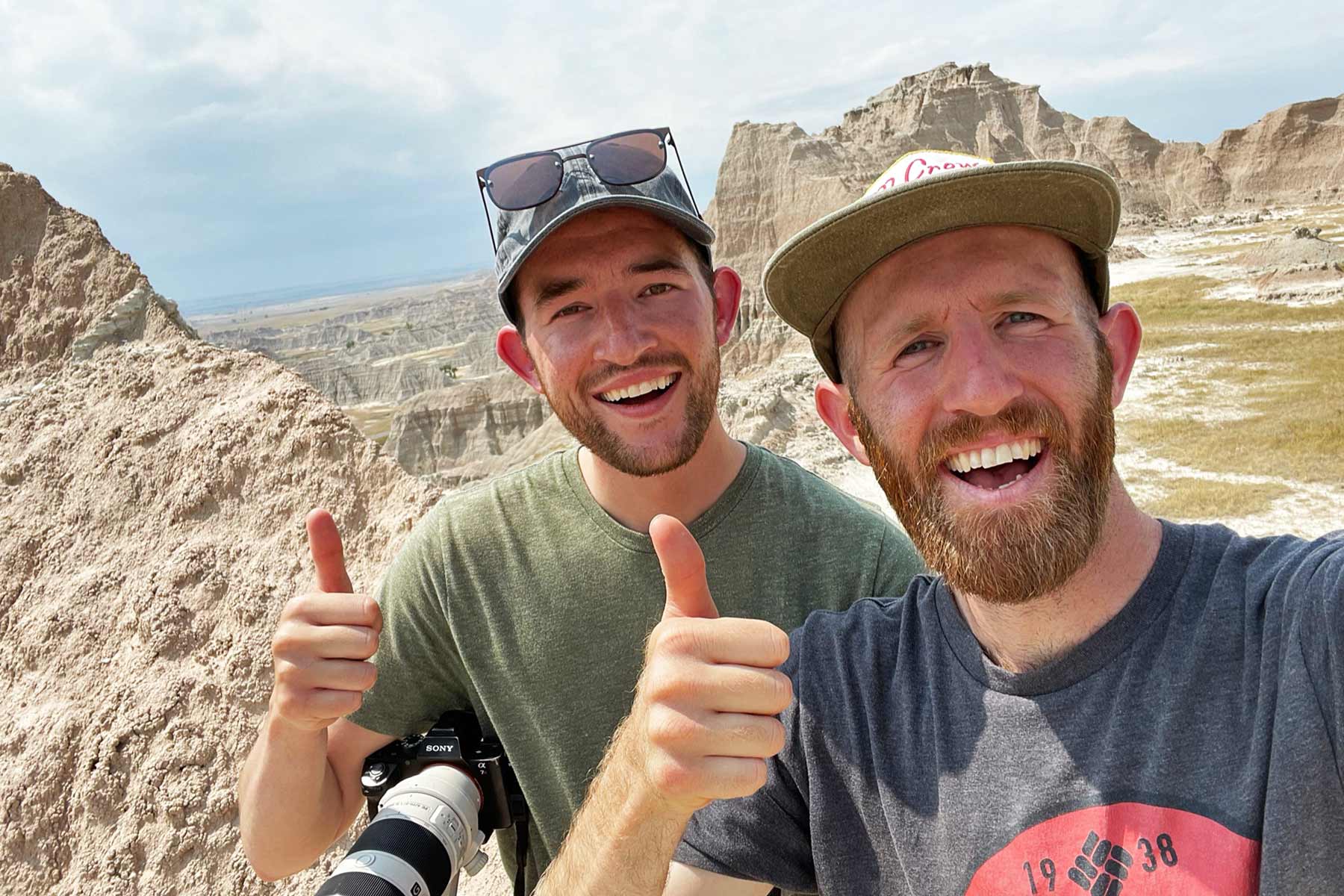
Our goal here at More Than Just Parks is to share the beauty of America’s national parks and public lands through stunning short films in an effort to get Americans and the world to see the true value in land conservation.
We hope you’ll follow our journey through the parks and help us to keep them the incredible places that they are. If you’re interested in joining the adventure then sign up below!
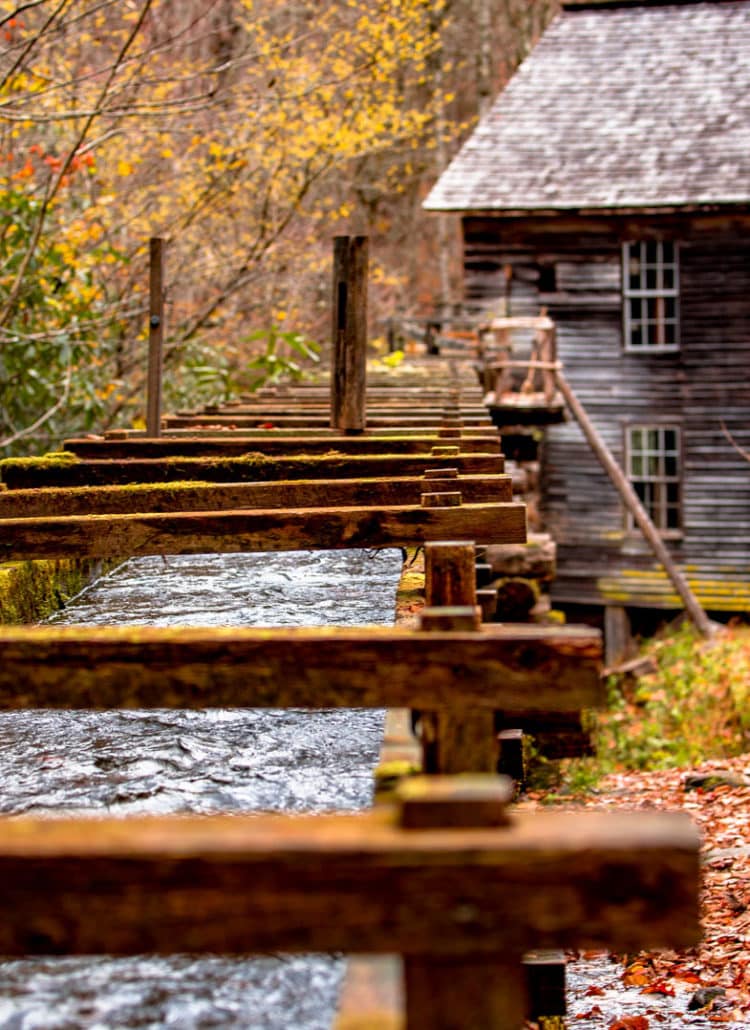
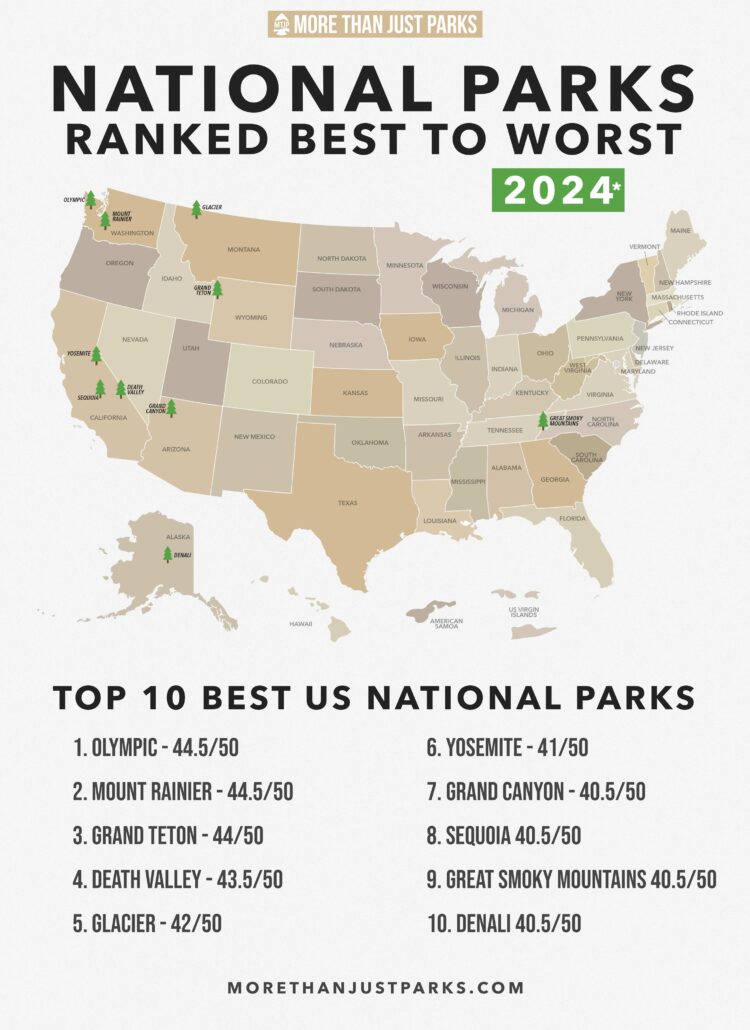
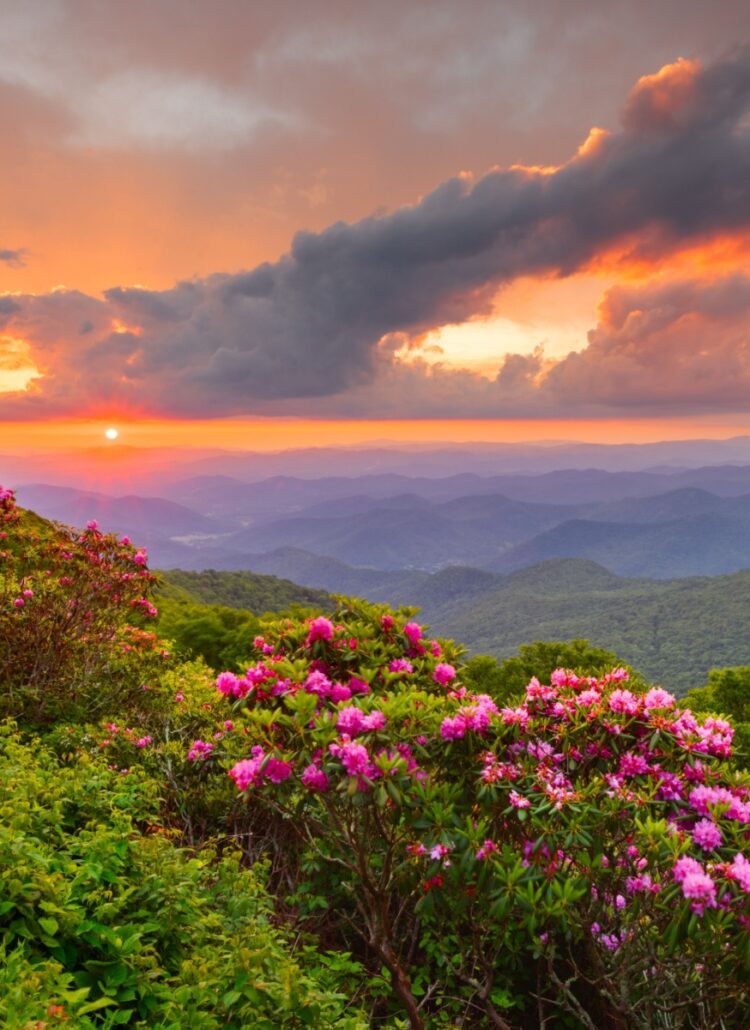
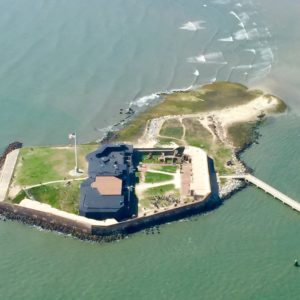
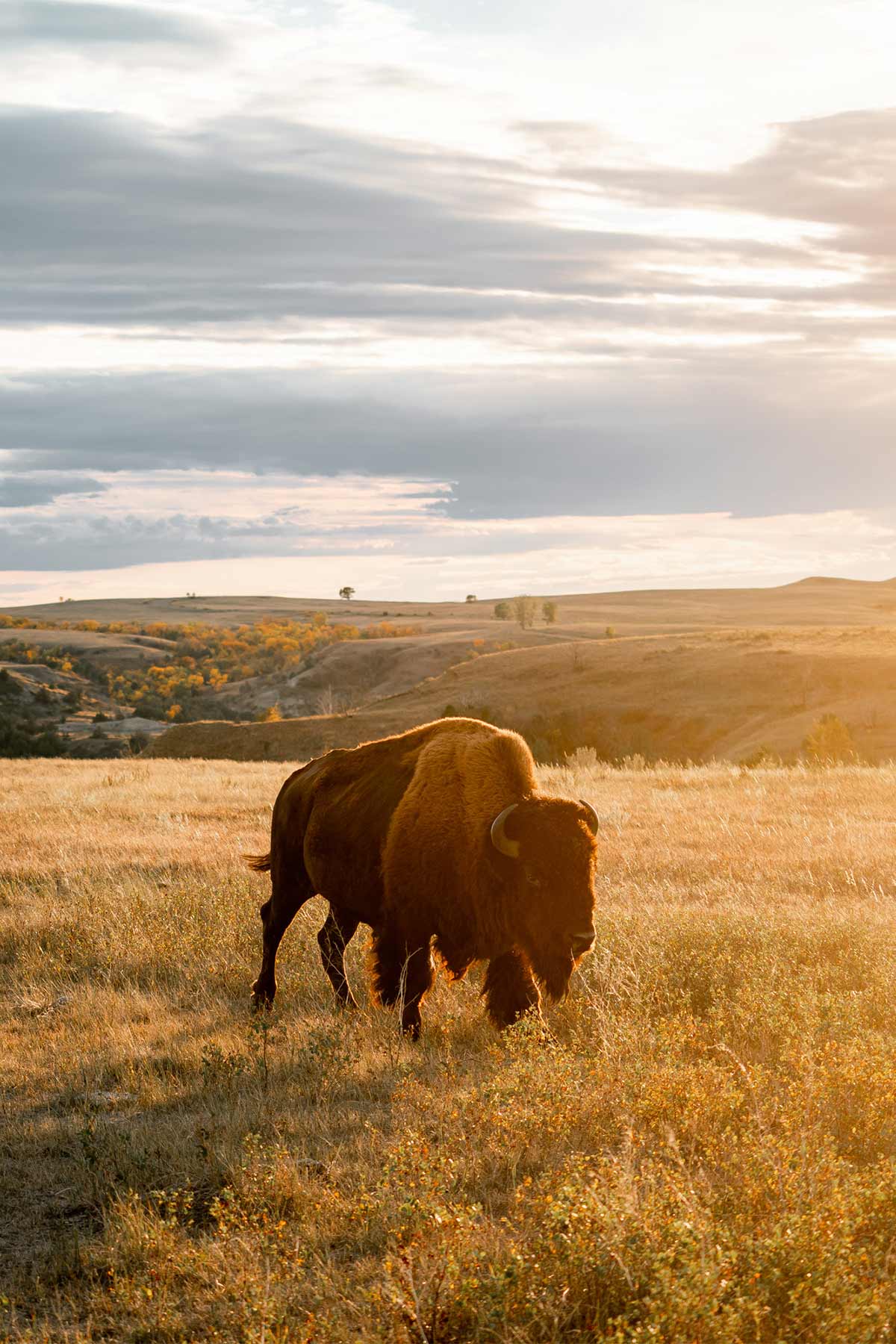
Thanks for writing this wonderful article about the National Park Service units in Kentucky. If you happen to revisit Camp Nelson again, we’d love to chat with you.
Park Ranger Steve, Camp Nelson National Monument.